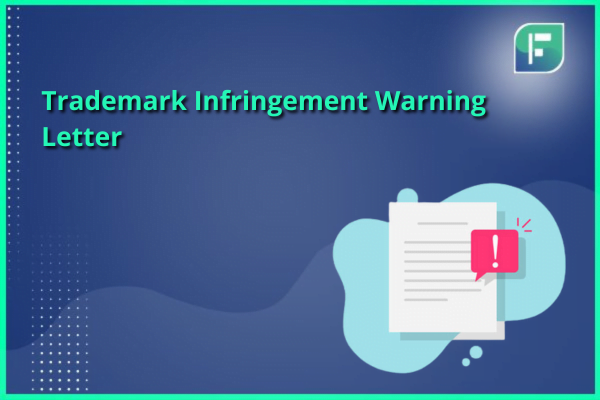A Trademark Infringement Warning Letter serves as a formal communication from the trademark owner to an infringing party, conveying a clear message of potential legal consequences if the infringement persists.
In the fiercely competitive corporate culture of today, protecting one’s brand and reputation is of supreme importance. Trademark owners, having invested substantial time and resources in building their brand image, possess the right to defend their brands against infringement. Issuing a Warning Letter to the party infringing on the trademark is a strategic step in this defence. In this blog, we shall see what basically is a Trademark Infringement Warning Letter and the benefits it offers in preserving brand integrity.
Understanding Trademark Infringement Warning Letters
A Trademark Infringement Warning Letter is a crucial form of legal communication between a trademark owner and an alleged infringer. It explicitly notifies the infringer of the potential legal repercussions they may face should they persist in using the trademark without authorization.
Consequences of Trademark Infringement
Trademark infringement is a significant violation. The Warning Letter strongly emphasizes that the infringer could be held legally accountable if they continue using the trademark without permission. Often, the initiation of legal proceedings against the infringing party is done by the formal issuance of this Warning Letter.
Components of a Trademark Infringement Warning Letter
An Infringement Warning Letter typically includes the following essential components:
1. Trademark Owner Information: This section provides details about the trademark registration and the owner, including their name, contact information, and, if applicable, the legal entity they represent. These details enable the infringer to establish communication with the trademark owner if necessary.
2. Offender Identification: The letter provides information about the alleged violator, including their name and contact details. This data enables the trademark owner to reach out if necessary and formally identify the infringing party.
3. Infringement Details: A comprehensive description of the trademark infringement is outlined in the letter. This may include specifics regarding unauthorised trademark use or the sale of counterfeit goods. This section educates the infringing party about the nature and extent of their infringement.
4. Cease and Desist Demand: A vital component of the letter is a clear and unequivocal demand for the infringing party to promptly halt their unlawful activities. This emphasises the trademark owner’s expectation of immediate compliance, aiming to avoid legal action.
5. Legal Action Warning: The letter explicitly conveys the potential legal consequences that may follow if the violator does not comply with the cease and desist demand. This underscores the gravity of potential legal actions that could be initiated against continued infringement.
6. Compliance Deadline: The letter sets a deadline by which the infringer must cease their unlawful activities. This due date provides a defined timeframe for compliance, emphasising the urgency and seriousness of the matter.
Timing of Issuing a Trademark Infringement Warning Letter
A Trademarks Infringement Warning Letter is typically issued under the following circumstances:
1. Discovery of Infringing Conduct: When a trademark owner becomes aware of infringing activities, whether through their own monitoring efforts or through a third-party notification, they should promptly initiate the process of issuing a Warning Letter.
2. Timely Notification: Swift action upon discovering trademark infringement is important to ensure the infringing party is promptly made aware of the owner’s awareness of their actions.
3. Anticipatory Legal Measures: The Warning Letter acts as an initial notice, conveying the trademark owner’s intent to protect their rights and initiate legal proceedings if the infringement persists. It serves as a proactive step towards potential legal action.
Advantages of Issuing a Trademark Infringement Warning Letter
Issuing a Trademarks Infringement Warning Letter offers several advantages for both trademark owners and potential infringers:
1. Halting Unauthorised Usage:
The warning letter acts swiftly to halt the infringing activity by informing the infringer of their violation. Many infringers may not be conscious of their trademark violation, making this letter an effective tool to stop further unauthorised usage promptly.
2. Mitigating Costly Legal Conflicts:
The issuance of a warning letter can potentially assist the trademark owner in avoiding expensive and lengthy legal disputes. Compliance with the cease and desist demand subsequent to the letter can often avert the necessity for a costly legal battle, providing a cost-effective resolution beneficial for both parties involved.
3. Safeguarding Brand Reputation:
Allowing an infringer to persist in using a trademark can damage the reputation and image of the trademark holder. Sending a Trademarks Infringement Warning Letter is a proactive measure that helps uphold the brand’s reputation by promptly addressing and terminating the infringing behaviour.
4. Establishing Ownership Rights:
The Warning Letter serves as important evidence in establishing the trademark owner’s rights in a court of law. If the infringing party persists in using the trademark post receiving the letter, it can be presented as proof of the owner’s trademark ownership, reinforcing their legal stance.
Final Thoughts
A Trademark Infringement Warning Letter stands as a vital tool for trademark owners, playing a key role in protecting their rights, reputation, and intellectual property. Its significance lies in the ability to swiftly address trademark violations, often resolving issues without entering into costly and prolonged legal battles. By notifying infringing parties of their unauthorised usage and the legal consequences that may follow, these letters frequently lead to an immediate halt in trademark infringement.
Furthermore, they allow trademark owners to maintain their brand’s integrity and serve as evidence of ownership should legal action become necessary. In essence, these warning letters symbolise a proactive and efficient approach to upholding trademark rights while mitigating potential legal conflicts, ultimately benefiting both trademark owners and potential infringers.






